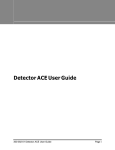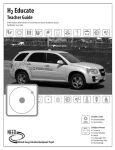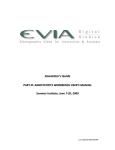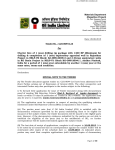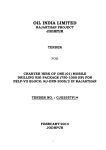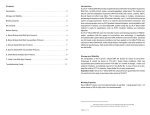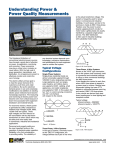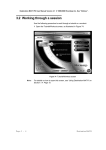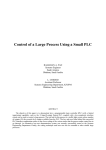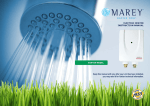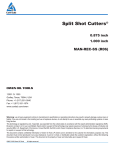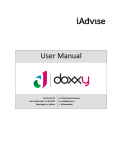Download Teacher Guide
Transcript
H2 EDUCATE Teacher Guide Information and hands-on activities to teach students about hydrogen as a fuel for the future. GRADE LEVEL Intermediate/Secondary SUBJECT AREAS Science Social Studies Math Language Arts Performing Arts Technology HYDROGEN CURRICULUM COMMITTEE Shelly Baumann, Educator, Rockford, MI Constance Beatty, Educator, Kankakee, IL Kim Jenkins, Educator, Cynthiana, KY Barbara Lazar, Educator, Albuquerque, NM Robert Lazar, Educator, Albuquerque, NM Bob Thompson, Educator, Glen Ellyn, IL Karen Reagor, Director of NEED Training, KY Todd Rogers, New York NEED Coordinator, NY Technical Review Sentech, Inc. Los Alamos National Laboratory U.S. Fuel Cell Council Developed by NEEDs Teacher Advisory Board Hydrogen Committee with funding from from the U.S. Department of Energy Hydrogen Program and with support and technical assistance from: Sentech U.S. Fuel Cell Council National Hydrogen Association Los Alamos National Laboratory NYSERDA Fuel Cell Store Unless otherwise noted, all data is from the U.S. Department of Energy, Energy Information Administration or the Los Alamos National Laboratory 3ULQWHGRQ5HF\FOHG3DSHUZLWK6R\%DVHG,QN TABLE OF CONTENTS Correlations to National Science Standards ......... 4-5 Teacher Guide ................................................... 6-11 Survey Answer Key ............................................... 11 Jigsaw/Presentation Questions............................. 12 Fuel Cell Simulation Guide ................................... 13 Fuel Cell Transparency Master .............................. 14 Fuel Cell Simulation Instructions .......................... 15 Fuel Cell Simulation Hang Tag Master ................... 16 Evaluation Rubrics ............................................... 17 Operation of the Fuel Cell Car .............................. 18 Hydrogen in the Round Game .......................... 19-20 Pre/Post Survey ................................................... 21 Lab Safety Rules .................................................. 22 Evaluation Form ................................................... 23 Materials in Kit ($500) 8 Electrolysis Apparatus 16 9-volt Batteries, 4 AA Batteries 1 Container Sodium Sulfate 10 Sets of Alligator Connections 25 Splints 100 Straws 2 Packages of Clay 10 Flashing Bulbs 1 Funnel 1 100 ml beaker 8 600 ml beakers 100 Feet of Fringe 2 Flashlights with Batteries 2 Fuel Cell Car Kits 2 Extra Test Tubes 5 Teacher & 30 Student Guides Materials Not in Kit 2 Gallons of Distilled Water 8 Packs of Safety Matches 1 Roll of Colored Tape 8 Pairs of Scissors Lab Safety Equipment (Goggles & Gloves) 3-5 Poster Boards for Presentation Groups 40 Pieces of String for Hang Tags (24) Set of Consumables ($75) 16 9-volt Batteries & 4 AA Batteries 2 Packages Clay 1 Container Sodium Sulfate 25 Splints 100 Straws 100 Feet of Fringe 5 Teacher & 30 Student Guides © 2007 THE NEED PROJECT P.O. BOX 10101 MANASSAS, VA 20108 1-800-875-5029 H2 Educate Teacher PAGE 3 Correlations to National Science Standards (Bolded standards are emphasized in the unit.) INTERMEDIATE STANDARDA: SCIENCE AS INQUIRY 1. Abilities Necessary to do Scientific Inquiry a. Identify questions that can be answered through scientific inquiry b. Design and conduct a scientific investigation c. Use appropriate tools and techniques to gather, analyze, and interpret data d. Develop descriptions, explanations, predictions, and models using evidence e. Think critically and logically to make the relationships between evidence and explanations f. Recognize and analyze alternative explanations and predictions g. Communicate scientific procedures and explanations 2. Understandings about Scientific Inquiry a. Different kinds of questions require different kinds of scientific investigations, including observing and describing, collecting, experimentation, research, discovery, and making models. b. Current knowledge and understanding guide scientific investigations. e. Scientific explanations emphasize evidence, have logical arguments, and use scientific principles, models, and theories. INTERMEDIATE STANDARDB: PHYSICAL SCIENCE 1. Properties and Changes of Properties in Matter a. A substance has characteristic properties, such as density, boiling point, and solubility, all of which are independent of the amount of the substance. c. Substances react chemically in characteristic ways with other substances to form new substances (compounds) with different characteristic properties. In chemical reactions, the total mass is conserved. e. There are more than 100 known elements that combine in many ways to produce compounds, which account for the living and nonliving substances in the world. f. These chemical elements do not break down during normal laboratory reactions involving heat, exposure to electric current, or reaction with acids. 3. Transfer of Energy a. Energy is a property of many substances and is associated with heat, light, electricity, mechanical motion, sound, nuclei, and the nature of a chemical. b. Energy is transferred in many ways. e. Electrical circuits provide a means of transferring electrical energy. f. In most chemical and nuclear reactions, energy is transferred into or out of a system. Heat, light, mechanical motion, or electricity might all be involved in such transfers. g. The sun is the major source of energy for changes on the earths surface. The sun loses energy by emitting light. A tiny fraction of that light reaches earth, transferring energy from the sun to the earth. The suns energy arrives as light with a range of wavelengths. INTERMEDIATE STANDARDE: SCIENCE AND TECHNOLOGY 2. Understandings about Science and Technology a. Scientific inquiry and technological design have similarities and differences. Scientists propose explanations about the natural world, and engineers propose solutions relating to human problems, needs, and aspirations. c. Technological solutions are temporary and have side effects. Technologies cost, carry risks, and have benefits. f. Perfectly designed solutions do not exist. All technological solutions have trade-offs, such as safety, cost, efficiency, and appearance. Risk is part of living in a highly technological world. Reducing risk often results in new technology. g. Technological designs have constraints. Some constraints are unavoidable, such as properties of materials, or effects of weather and friction. Other constraints limit choices in design, such as environmental protection, human safety, and aesthetics. PAGE 4 H2 Educate Teacher © 2007 THE NEED PROJECT P.O. BOX 10101 MANASSAS, VA 20108 1-800-875-5029 INTERMEDIATE STANDARDF: SCIENCE IN PERSONAL AND SOCIAL PERSPECTIVES 1. Personal Health b. Natural environments may contain substances that are harmful to human beings. Maintaining environmental health involves establishing or monitoring quality standards related to use of soil, water, and air. 2. Populations, Resources, and Environments a. When an area becomes overpopulated, the environment will become degraded due to the increased use of resources. b. Causes of environmental degradation and resource depletion vary from region to region and from country to country. 3. Natural Hazards b. Human activities can induce hazards through resource acquisition, urban growth, land-use decisions, and waste disposal. c. Hazards can present personal and societal challenges because misidentifying the change or incorrectly estimating the rate and scale of change may result in either too little attention and significant human costs or too much cost for unneeded preventive measures. 4. Risks and Benefits a. Risk analysis considers the type of hazard and estimates the number of people that might be exposed and the number likely to suffer consequences. b. Students should understand the risks associated with natural hazards, chemical hazards, biological hazards, social hazards, and personal hazards. c. Students can use a systematic approach to thinking critically about risks and benefits. d. Important personal and social decisions are made based on perceptions of benefits and risks. 5. Science and Technology in Society a. Science influences society through its knowledge and world view. The effect of science on society is neither entirely beneficial nor entirely detrimental. b. Societal challenges often inspire questions for scientific research, and societal priorities often influence research priorities. c. Technology influences society through its products and processes. Technological changes are often accompanied by social, political, and economic changes that can be beneficial or detrimental to individuals and to society. Social needs, attitudes, and values influence the direction of technological development. d. Science and technology have contributed enormously to economic growth and productivity among societies and groups within societies. e. Science cannot answer all questions and technology cannot solve all human problems or meet all human needs. Students should appreciate what science and technology can reasonably contribute to society and what they cannot do. For example, new technologies often will decrease some risks and increase others. INTERMEDIATE STANDARDG: HISTORY AND NATURE OF SCIENCE 2. Nature of Science c. It is normal for scientists to differ with one another about the interpretation of new evidence. It is part of scientific inquiry to evaluate the results and explanations of other scientists. As scientific knowledge evolves, major disagreements are eventually resolved through such interactions between scientists. 3. History of Science c. Tracing the history of science can show how difficult it was for scientific innovators to break through the accepted ideas of their time to reach conclusions that we take for granted today. © 2007 THE NEED PROJECT P.O. BOX 10101 MANASSAS, VA 20108 1-800-875-5029 H2 Educate Teacher PAGE 5 I NTRODUCTION TO U NIT This middle school hydrogen unit is designed as a multidisciplinary curriculum with a hands-on science kit, fuel cell simulation equipment, element modeling materials, fuel cell car kit for demonstration, and language arts, social studies, and technology activities. The unit looks at the energy picture in the United States today, the challenges for the future, the role of hydrogen in meeting those challenges, and the scientific basis for hydrogen as a fuel, with an exploration of electrolysis as a method to generate hydrogen. T IME The unit will take up to two weeks in a science classroom or one week as an integrated unit in science, language arts, and social studies. U NIT P REPARATION 1. Read the Teacher and Student Guides for an overview of all activities in the unit. Five Teacher Guides and a class set of 30 Student Guides are included in the kit to facilitate planning an integrated unit. 2. Examine the equipment in the kit to become familiar with its design and to make sure nothing was damaged in shipment. Refer to the Operating Instructions and Experiment Instructions Manual in the Fuel Cell Car Kit to gain a more comprehensive understanding of how the car works. 3. Decide how you will structure the unitas a single class unit or as an integrated unit with other teachers. If this will be an integrated unit, meet with the other teachers to plan and schedule the activities. A suggested integrated unit is as follows: Pre/Post SurveyScience Fuel Cell Car DemonstrationsScience Comparing Energy SystemsSocial Studies Background Reading and OrganizersLanguage Arts Electrolysis & Element ModelsScience Hydrogen in Society Jigsaw ActivitySocial Studies Fuel Cell Simulation and ReportLanguage Arts Hydrogen Economy Comparison ActivitySocial Studies Hydrogen in the Round GameLanguage Arts 4. Collect the materials not included in the kit (page 3 of the Teacher Guide). 5. Make copies of the pages in the Teacher and Student Guides that you want the students to complete or have the students copy them into science notebooks as they need them. It is suggested that the students not write in the Student Guides, but keep science notebooks in which they record all of their activities. 6. Place students into groups and assign roles according to the following activities: Electrolysisgroups of two lab partners Jigsawseven role groups Jigsawthree/five presentation groups with one representative of each role group Simulationfifteen roles PAGE 6 H2 Educate Teacher © 2007 THE NEED PROJECT P.O. BOX 10101 MANASSAS, VA 20108 1-800-875-5029 U NIT P ROCEDURE ACTIVITY ONE: SETTING THE STAGE FOR HYDROGEN 1. Introduce the unit to the class. Demonstrate the hydrogen fuel cell car to stimulate interest. 2. Have the students take the pre-unit Survey and collect the results to send to NEED at the conclusion of the unit (page 21 of Teacher Guide). ACTIVITY TWO: HYDROGEN 1. IN SOCIETY JIGSAW Divide the students into seven groups. Assign each group one of seven specific roles, as listed below. These groups are the role groups. Also assign the students to presentation groups, in which they will share their role expertise. Each presentation group should include at least one member from each role group. Role Groups: Physicist Hydrogen Distributor Energy Economist Environmental Scientist Hydrogen Producer Energy Security Advisor Energy Efficiency & Reliability Expert 2. Explain the jigsaw assignment to the students. Give each student the list of questions for his/her role group (page 12 of Teacher Guide) and a copy of the role group organizer (page 15 of Student Guide), and explain that the questions will guide their reading and research. Explain that they will be involved in completing the organizer over several days as they participate in the readings and other hydrogen-related activities. They will use the information they have gathered to design and present projects at the end of the unit in their presentation groups. 3. Instruct the students to use the background material, as well as outside research, to answer their questions as completely as possible. Guide them to the list of hydrogen websites (page 14 of Student Guide) where they can go to find additional information. 4. At the end of the Electrolysis and Simulation activities, when the students have read all of the background sections, completed their research and their organizers, have the role groups meet to discuss their findings. Instruct the students to add to their organizers any additional information provided by group members. 5. After the students have met in the role groups and completed their discussions, assign them to their presentation groups. Explain that the presentation groups will synthesize the information collected by the different role groups. 6. Distribute copies of the presentation questions (page 12 of Teacher Guide) and presentation organizer (page 16 of Student Guide) to each student. Instruct the presentation groups to work together to answer the presentation questions, using poster-boards to collect members ideas from each of the role areas. 7. After the groups have answered all of the presentation questions, instruct each presentation group to choose a product with which to present their findings. Suggested products include a PowerPoint presentation, a brochure, an expo display board, a song or rap, a letter to the editor of the school newspaper, an opinion paper (persuasive essay), an advertisement, a video, or any other format acceptable to the teacher. 8. Give the groups a timeframe in which to complete and present their projects. 9. Use the Presentation Rubric (page 17 of Teacher Guide) to evaluate the projects. © 2007 THE NEED PROJECT P.O. BOX 10101 MANASSAS, VA 20108 1-800-875-5029 H2 Educate Teacher PAGE 7 ACTIVITY THREE : COMPARING E NERGY SYSTEMS 1. Have the students read the following background sections (pages 4-5 of Student Guide): The Energy Picture Today, Looking to the Future, and The Ideal Energy System 2. Have the students draw Venn diagrams (page 17 of Student Guide) to compare the energy system in the United States today with the ideal energy system. 3. Discuss with the class the problems with our energy system today. 4. Brainstorm ideas for making todays energy system more ideal. ACTIVITY FOUR: THE SCIENCE 1. OF HYDROGEN Have the students complete the graphic organizer (page 18 of the Student Guide) as they read the following background sections (pages 5-7 of Student Guide): What is Hydrogen?, Atomic Structure, and The Periodic Table 2. Discuss any questions the students have. ACTIVITY FIVE: ELECTROLYSIS (SIMULTANEOUS ACTIVITY WITH ACTIVITY SIXELEMENT MODELING) P REPARATION 1. Write the Variable Questions and Discussion Questions (page 9 of Teacher Guide) on the board. 2. Prepare 1 gallon of the electrolyte solution (100 cm3 of Na2SO4 to 1 gallon water) as follows: Pour 100 ml from a 1-gallon plastic jug of distilled water into a clean container (this distilled water can be used for the Fuel Cell Car Demonstration). Add 100 cm3 (100 ml) of sodium sulfate (Na2SO4) to the jug of distilled water using the small beaker and funnel. Close the jug and gently shake the jug until the sodium sulfate is dissolved. NOTE: The solution should be saved in the jug for subsequent group use after the first group of students has completed the experiment. The solution can be saved indefinitely in a plastic container; if you are saving it in the distilled water jug, be sure to clearly mark the jug with its contents. NOTE: The electrolysis process will proceed more quickly if the electrolyte solution is very warm or more concentrated. If the chemical reaction is too slow, the students may lose interest. It is suggested that you place the container with the electrolyte solution in a hot water bath approximately an hour before the lab is scheduled. If this is not feasible, you may increase the concentration of the solution by adding 10 cm3 more sodium sulfate to the solution. Fill 8 600-ml beakers with 500 ml of the electrolyte solution. 3. Set up eight lab stations with the following equipment: 1 Electrolysis Apparatus (with two test tubes and set of tongs) 1 Beaker with 500 ml of Electrolyte Solution 1 Splint Lab Safety Equipment (Goggles & Gloves) 1 9-volt Battery 2 Alligator Connectors 1 Book of Safety Matches L AB S AFETY 1. Go over the Lab Safety rules (page 22 of the Teacher Guide) and the Material Safety Data Sheet (MSDS) for Sodium Sulfate included in the kit with the students. Reinforce any other lab safety rules that you require. 2. Decide if you want the students to use the matches and splints on their own or only with teacher supervision. Be prepared to explain to the students any changes in the lab procedure. PAGE 8 H2 Educate Teacher © 2007 THE NEED PROJECT P.O. BOX 10101 MANASSAS, VA 20108 1-800-875-5029 A SSIGN 1. GROUPS Assign students in groups of two to lab stations or element modeling stations. Sixteen students will participate in the lab during the first rotation and the remaining students will participate in the element modeling activity. In the second rotation, the students will switch activities. P ROCEDURE 1. Have the students read the following sections of the Student Guide: How Is Hydrogen Made? (8), Electrolysis (8, 19), Electrolysis Exploration (21), and Electrolysis Data Recording Form (22). Answer any student questions and provide instructions about recording the data in the students notebooks. If necessary, review the lab procedure (21). 2. Assign the students in pairs to the lab stations and monitor their work. 3. When the students have completed the lab, have them return the electrolyte solution to the beakers and rinse the electrolysis apparatus, test tubes, and tongs under running water. Collect the electrolyte solution from the beakers and store in the marked container for reuse. 4. Instruct the students to answer the Discussion Questions in their notebooks. 5. Have the students who were participating in the Element Modeling Activity conduct the lab, following the same procedure. 6. When all students have completed the lab, have them formulate hypotheses and design lab procedures to answer the Variable Questions. D ISCUSSION Q UESTIONS 1. What did you learn about the composition of water? 2. Explain how electrical energy decomposes water. Use the terms anode, cathode, oxidation, and reduction. 3. Which gas is attracted to the positive electrode and which gas is attracted to the negative electrode? Explain why each gas is attracted to each electrode. 4. Explain how to test for hydrogen and oxygen gases. 5. Balance this equation for the decomposition of water: 8 H20 = __H2 + __O2. (Answer: 8H2 + 4O2) V ARIABLE Q UESTIONS 1. How would using distilled water with no electrolyte affect the results? 2. How would increasing the concentration of the electrolyte affect the results? 3. How would increasing the voltage affect the results? (Connecting 2-4 batteries in parallel) 4. How would increasing the current affect the results? (Connecting 2-4 batteries in series) 5. How would changing the temperature of the solution affect the results? 6. How would using salt or baking soda as the electrolyte affect the results? E LECTROLYSIS E XTENSIONS E XPLORING V ARIABLES 1. Have groups of students conduct the lab experiments that they designed to explore the variables in the questions listed above. 2. Have the student groups share the results of their variable experiments with the class. © 2007 THE NEED PROJECT P.O. BOX 10101 MANASSAS, VA 20108 1-800-875-5029 H2 Educate Teacher PAGE 9 G RAPHING R ESULTS 1. On graph paper or using a computer-graphing program, have each lab group graph the volume of hydrogen (y-axis) in cubic centimeters vs. time (x-axis) in minutes. On the same graph, plot the volume of oxygen vs. time. 2. Have the students interpret the results of the graphs. 3. Have the students plot the slope of the hydrogen line and the slope of the oxygen line. These slopes represent the average of the volumes of both gases over time. By dividing the slope of the hydrogen by the slope of the oxygen and expressing the result as a rounded whole number over 1, you will have a more accurate determination of the gas ratios. The formula for the slope: 6ORSH << ;; ACTIVITY SIX: ELEMENT MODELING (SIMULTANEOUS ACTIVITY WITH ELECTROLYSIS LAB ACTIVITY) P REPARATION 1. Prepare one or more work areas large enough for 16 students to complete the activity with the following materials: Straws Clay Scissors P ROCEDURE 1. Have the students read the Element Models activity (page 23 of the Student Guide). Answer any student questions. 2. Assign students to the work area, instruct them to complete the activity, using their science notebooks to define the key terms and draw diagrams of their molecules. Monitor student work. 3. When the students have completed the activity, which will not take as much time as the lab activity, instruct them to work on the jigsaw activity. E LEMENT M ODEL P ERFORMANCE A SSESSMENT Students should be able to distinguish between atoms and molecules and draw diagrams of simple molecules. Students knowledge of basic molecular structure should be significantly enhanced. ACTIVITY SEVEN: FUEL CELL ACTIVITY 1. Read the separate, detailed instructions for conducting the Fuel Cell Simulation Activity (pages 1316 of the Teacher Guide). 2. Set up a large open area with the following materials: Flashing Bulbs Flashlight 3. Fringe Colored Tape Scissors Hang Tags Follow the separate instructions for conducting and assessing the activity. ACTIVITY E IGHT : H YDROGEN E CONOMY C OMPARISON 1. Have students read the following background sections (pages 9-10, 12-14 of Student Guide): Hydrogen as a Fuel, Uses of Hydrogen, The Challenges of Hydrogen, Hydrogen Storage, Hydrogen Distribution, Hydrogen Safety, and Hydrogen & Our Future Economy. 2. PAGE 10 Have students draw Venn diagrams to compare a hydrogen economy with the ideal energy system (page 25 of Student Guide). Discuss. H2 Educate Teacher © 2007 THE NEED PROJECT P.O. BOX 10101 MANASSAS, VA 20108 1-800-875-5029 ACTIVITY NINE: HYDROGEN IN THE ROUND GAME (VOCABULARY REINFORCEMENT) P REPARATION 1. Make copies of the Hydrogen in the Round questions and answers on heavy weight paper or card stock (pages 19-20 of Teacher Guide). You may want to use different colors for each round. 2. Cut out the individual cards, keeping Round 1 and Round 2 cards separate. P ROCEDURE 1. Distribute the Round 1 cards randomly to the students. If you have fewer than 30 students in the class, give some students two cards. All of the cards must be distributed for the game to succeed. If you have more than 30 students, have some students sit out the first round and participate in the second round. These students can also serve as arbiters of disputes. 2. Explain the instructions for the game, as follows: The student who has the card labeled START begins by reading the question that follows the word START, Who has..... The student who has the answer to the question stands up and responds by reading his/her card, I have ---------. Who has ---------? This procedure continues until every person has read his/her card and the question has returned to the Starter, who answers the last question, and says, The End. 3. Collect the Round 1 cards and distribute the Round 2 cards. Proceed to play Round 2 in the same way as Round 1. 4. Collect the Round 2 cards and save. You can repeat this activity throughout the unit to reinforce vocabulary. A CTIVITY T EN : E VALUATION 1. Have the students take the post-unit Survey and collect the results (page 21 of Teacher Guide). 2. Complete the unit Evaluation Form with the students (page 23 of Teacher Guide). 3. Send the pre and post Survey results and the Evaluation Form to the NEED Project: The NEED Project 8408 Kao Circle Manassas, VA 20110 FAX: 1-800-847-1820 ANSWERS TO SURVEY 1. c 2. b 3. c 4. c 5. c 6. T 7. F 8. d 9. c 10. c © 2007 THE NEED PROJECT P.O. BOX 10101 MANASSAS, VA 20108 1-800-875-5029 11. d 12. F 13. T 14. T 15. T H2 Educate Teacher PAGE 11 JIGSAW R OLE Q UESTIONS AND P RESENTATION Q UESTIONS Sustainability: Physicist 1. 2. 3. 4. What are the physical and chemical properties of hydrogen? How can hydrogen be stored? What are the different sources of hydrogen on earth? Which sources of hydrogen hold promise for a long-term energy solution? Production: Hydrogen Producer 1. 2. 3. 4. What are the processes currently being used to separate hydrogen? What are the challenges of producing hydrogen in large amounts? What safety issues are associated with separating hydrogen? How does the cost of producing hydrogen compare to other fuels? Delivery/Distribution: Energy Distributor 1. 2. 3. 4. In what forms can hydrogen be stored and transported? What distribution technologies are currently in use? What are the challenges of refueling hydrogen operations? Identify and explain the properties of hydrogen that make it difficult to transport. Energy Security: Energy Security Advisor 1. 2. 3. 4. What is energy security and why is it important to the United States? Why is it important to reduce our dependence on imported energy? How could the use of hydrogen decrease our dependence on imported energy? What other alternatives would reduce our dependence on imported energy? Economics: Energy Economist 1. 2. 3. 4. What are the advantages of a hydrogen economy? How would a hydrogen-based economy look different from our current energy economy? How does the cost of hydrogen applications compare to other alternative fuels? What would help the transition from a nonrenewable energy economy to a hydrogen economy? Efficiency & Reliability: Energy Efficiency & Reliability Expert 1. 2. 3. 4. What current technologies use hydrogen as a fuel? How would the use of hydrogen be more efficient than the fuels we currently use? How does the reliability of fuel cells compare to the reliability of other power systems? What technological advances would make the use of hydrogen more efficient and reliable? Environment: Environmental Scientist 1. 2. 3. 4. What are the resources from which hydrogen can be produced (extracted)? What are the environmental advantages of each of these sources? What are the environmental disadvantages of each of these sources? How does hydrogen compare environmentally to the fuels used in the U.S. today? Presentation Questions 1. 2. 3. 4. 5. What important facts have you learned about hydrogen? What are the advantages of hydrogen? What are the disadvantages of hydrogen? What are the ways hydrogen could be used in the future? What are your opinions about hydrogen? PAGE 12 H2 Educate Teacher © 2007 THE NEED PROJECT P.O. BOX 10101 MANASSAS, VA 20108 1-800-875-5029 PEM FUEL CELL: A SIMULATION ACTIVITY G OAL : To introduce the concept of a PEM fuel cell, what it is and how it works, through a simulation activity. TIME: One two class periods O BJECTIVES : Upon · · · completion of this activity, students will be able to: explain the components of a PEM fuel cell and how it works. understand how hydrogen is used to carry energy and generate electricity. trace the flow of the system of a PEM fuel cell by accurately drawing and labeling a diagram. P REPARATION : 1. Write the vocabulary list below onto the board. 2. Make an overhead transparency of the PEM Cell diagram (page 14 of Teacher Guide). 3. Make four copies of the Hang Tag master (page 16 of Teacher Guide) onto card stock, cut out the hang tags and attach string to each tag. The hydrogen and oxygen hang tags are two-sided tags, folded on the dotted lines. P ROCEDURE : 1. Have the students review the vocabulary terms, using the Glossary (pages 26-27 of Student Guide). 2. Use the transparency to introduce the operation of a fuel cell to the students. 3. Have the students read the What is a Fuel Cell? background information and the Fuel Cell activity instructions (pages 11 and 24 of the Student Guide). Answer any student questions. 4. Assign roles to the students. Some students may be observers during the first simulation, then assume roles in a second simulation while the other students observe. V OCABULARY : A working knowledge of the following words and terms is needed to understand the concepts used in this simulation activity. These words should be used in the final written assessment. Hydrogen Electron Ion Atom Oxygen Molecule Circuit Electrode PEM Anode Polymer Cathode Electrolyte Catalyst Membrane Electrolysis S IMULATION S UGGESTIONS : 1. Students will need a 10 x 10 open space; use a hallway, outside area, or gym to allow enough room for movement and observers. Have the students set up the simulation according to the diagram. 2. Let students determine how to conduct the simulationpart of the learning value of this activity is allowing students to discover and learn by doing, extending and reinforcing prior knowledge. A SSESSMENT : After participating in and observing the simulation several times, have the students imagine they are writing to other students to explain how a fuel cell works, with an explanation of how fuel cells are used. Students must use the vocabulary words and draw diagrams to support their explanations. Use the Simulation Rubric (page 17 of Teacher Guide) to assess vocabulary acquisition and understanding of concepts. © 2007 THE NEED PROJECT P.O. BOX 10101 MANASSAS, VA 20108 1-800-875-5029 H2 Educate Teacher PAGE 13 Transparency Master PAGE 14 H2 Educate Teacher © 2007 THE NEED PROJECT P.O. BOX 10101 MANASSAS, VA 20108 1-800-875-5029 © 2007 THE NEED PROJECT P.O. BOX 10101 MANASSAS, VA 20108 1-800-875-5029 H2 Educate Teacher PAGE 15 HANG T AG M ASTER 16 GRADING RUBRICSIMULATION Grade Scientific Concepts Diagrams Procedure Summary 4 Written explanation illustrates accurate and thorough understanding of scientific concepts underlying simulation. Comprehensive diagrams are accurately and neatly labeled and make the simulation easier to understand. Procedures are listed in clear steps. Each step is numbered and is written as a complete sentence. Summary describes information and skills learned, as well as some future applications to real life situations. 3 Written explanation illustrates an accurate understanding of most scientific concepts underlying simulation. Necessary diagrams are accurately and neatly labeled. Procedures are listed in a logical order, but steps are not numbered or are not in complete sentences. Summary describes the information learned and a possible application to a real life application. 2 Written explanation illustrates a limited understanding of scientific concepts underlying simulation. Necessary diagrams are labeled. Procedures are listed but are not in a logical order or are difficult to understand. Summary describes the information learned. 1 Written explanation illustrates an inaccurate understanding of scientific concepts. Necessary diagrams or important components of diagrams are missing. Procedures do not accurately reflect the steps of the simulation. Summary is missing or inaccurate. GRADING RUBRICPRESENTATION PROJECT Grade Content Organization Originality 4 Project covers the topic in-depth with many details and examples. Subject knowledge is excellent. Content is very well organized and presented in a logical sequence. Project shows much original thought. Ideas are creative and inventive. The workload is divided and shared equally by all members of the group. 3 Project includes essential information about the topic. Subject knowledge is good. Content is logically organized. Project shows some original thought. Work shows new ideas and insights. The workload is divided and shared fairly equally by all group members, but workloads may vary. 2 Project includes essential information about the topic, but there are 1-2 factual errors. Content is logically organized with a few confusing sections. Project provides essential information, but there is little evidence of original thinking. The workload is divided, but one person in the group is viewed as not doing fair share of the work. 1 Project includes minimal information or there are several factual errors. There is no clear organizational structure, just a compilation of facts. Project provides some essential information, but no original thought. The workload is not divided, or several members are not doing fair share of the work. © 2007 THE NEED PROJECT P.O. BOX 10101 MANASSAS, VA 20108 1-800-875-5029 Workload H2 Educate Teacher PAGE 17 ASSEMBLY AND OPERATION OF THE FUEL CELL CAR The Fuel Cell Car should be used only by a knowledgeable teacher or by students under the supervision of the teacher. The teacher must ensure proper handling and draw attention to potential dangers. Before using the car, review the User Manual in the car kit to fully understand operational safety precautions. All participants should wear protective goggles. The car should be assembled and operated on a solid, level surface, with the ambient temperature between 20° C and 30° C. It is recommended that you operate the car indoors to protect it from the weather. Make sure that the fuel cell car is not charged or operated near an open flame. B ASIC F UNCTION Here are the basics of how the fuel cell works. Refer to the User Manual for additional technical data. 1. Use ONLY THE POWER SUPPLY INCLUDED to provide the electricity to power the electrolysis process. 2. The electric current splits the water molecules into hydrogen and oxygen gases in the charge mode of the reversible fuel cell. The gases are stored in the storage cylinders. 3. In the discharge mode, the fuel cell uses the hydrogen and oxygen gases as fuel to generate an electric current that runs the electric motor of the car, producing water and heat as byproducts. ASSEMBLY OF THE FUEL CELL CAR MATERIALS: Fuel Cell Car Kit with User Manual, 2 AA batteries (3-volt maximum), scissors, distilled water 1. Follow the instructions on pages 67 of the User Manual to assemble the car. 2. To HYDRATE the fuel cell, follow the instructions on page 7 of the User Manual. CAUTION: ONLY DISTILLED WATER should be used. Use of any other liquid, even tap water, may destroy the fuel cell membrane. E LECTROLYSIS : P RODUCING H YDROGEN MATERIALS: Assembled Fuel Cell Car, power pack with 2 AA batteries, distilled water 1. Follow the instructions on pages 8-11 of the User Manual to produce hydrogen using the fuel cell. 2. Use ONLY the Power Pack provided. 3. Use ONLY distilled water. 4. DO NOT PROCEED near an open flame. 5. DO NOT PROCEED until you have hydrated the fuel cell as explained in the Assembly Section above. OPERATION OF THE FUEL CELL CAR MATERIALS: Charged Fuel Cell Car 1. Follow the instructions on page 12 of the User Manual to operate the fuel cell car. 2. When the car stops running, it can be recharged following the Electrolysis Procedure. 3. The AA batteries in the Power Pack may need to be replaced after several charges. A DVICE AND T ROUBLESHOOTING 1. Follow the Advice on page 13 of the User Manual for optimal operation. 2. Use the Troubleshooting section on page 14 of the User Manual if your car does not work properly. PAGE 18 H2 Educate Teacher © 2007 THE NEED PROJECT P.O. BOX 10101 MANASSAS, VA 20108 1-800-875-5029 HYDROGEN IN THE ROUND 1 19 HYDROGEN 20 IN THE ROUND 2 HYDROGEN SURVEY 1. The average American uses how much energy compared to the average world citizen? a. half as much b. twice as much c. six times as much d. twenty times as much 2. What percentage of U.S. energy consumption is from renewable energy sources? a. 1 % b. 6 % c. 12 % d. 24 % 3. How much of total petroleum consumption does the United States import from foreign countries? a. > 10 % b. > 25 % c. > 50 % d. < 50 % 4. How much of total U.S. energy consumption is used by the transportation sector of the economy? a. 7 % b. 17 % c. 27 % d. 47 % 5. An ideal energy system would a. include domestic and imported energy sources. b. use only nonrenewable energy sources. c. use a variety of energy sources. d. All of the above 6. Hydrogen is one of the most abundant elements in the universe. True False 7. Hydrogen gas is abundant in underground reservoirs on Earth. True False 8. Hydrogen fuel can be produced from a. water. b. natural gas. c. biomass. d. All three 9. Hydrogen can be used a. as a vehicle fuel. b. to produce electricity. c. Both a and b d. Neither a nor b 10. Electrolysis is a process in which electricity is used to a. turn water into steam. b. combine hydrogen and oxygen molecules to make water. c. split water molecules into hydrogen and oxygen gases. d. produce light and heat. 11. A fuel cell a. produces electricity. b. uses hydrogen as fuel. c. emits only water and heat. d. All of the above 12. A fuel cell must be replaced often, like a non-rechargeable battery. True False 13. Hydrogen can be transported as a liquid or a gas. True False 14. Hydrogen is as safe as gasoline or diesel fuel when handled properly. True False 15. Hydrogen could meet many of our energy needs in the future. True False © 2007 THE NEED PROJECT P.O. BOX 10101 MANASSAS, VA 20108 1-800-875-5029 H2 Educate Teacher PAGE 21 LAB SAFETY RULES EYE SAFETY Always wear safety glasses when conducting experiments. FIRE S AFETY Do not heat any substance or piece of equipment unless specifically instructed to do so. Be careful of loose clothing. Do not reach across or over a flame. Always keep long hair pulled back and secured. Do not heat any substance in a closed container. Always use the tongs or protective gloves when handling hot objects. Do not touch hot objects with your hands. Keep all lab equipment, chemicals, papers, and personal effects away from a flame. Extinguish a flame as soon as you are finished with the experiment and move it away from the immediate work area. H EAT S AFETY Always use tongs or protective gloves when handling hot objects and substances. Keep hot objects away from the edge of the lab tablein a place where no one will accidentally come into contact with them. Do not use the steam generator without the assistance of your teacher. Remember that many objects will remain hot for a long time after the heat source is removed or turned off. G LASS S AFETY Never use a piece of glass equipment that appears cracked or broken. Handle glass equipment carefully. If a piece of glassware breaks, do not attempt to clean it up yourself. Inform your teacher. Glass equipment can become very hot. Use tongs if glass has been heated. Clean glass equipment carefully before packing it away. C HEMICAL S AFETY Do not smell, touch, or taste chemicals unless instructed to do so. Keep chemical containers closed except when using them. Do not mix chemicals without specific instructions. Do not shake or heat chemicals without specific instructions. Dispose of used chemicals as instructed. Do not pour chemicals back into container without specific instructions to do so. If a chemical accidentally touches you, immediately wash the area with water and inform your teacher. PAGE 22 H2 Educate Teacher © 2007 THE NEED PROJECT P.O. BOX 10101 MANASSAS, VA 20108 1-800-875-5029 H2 EDUCATE Evaluation Form State: ___________ 1. 2. 3. 4. 5. 6. 7. 8. 9. 10. Grade Level: ___________ Number of Students: __________ Did you conduct the entire activity? Were the instructions clear and easy to follow? Did the activity meet your academic objectives? Was the activity age appropriate? Were the allotted times sufficient to conduct the activity? Was the activity easy to use? Was the preparation required acceptable for the activity? Were the students interested and motivated? Was the energy knowledge content age appropriate? Would you use the activity again? Yes Yes Yes Yes Yes Yes Yes Yes Yes Yes How would you rate the activity overall (excellent, good, fair, poor)? How would your students rate the activity overall (excellent, good, fair, poor)? What would make the activity more useful to you? Other Comments: Please fax or mail to: NEED Project PO Box 10101 Manassas, VA 20108 FAX: 1-800-847-1820 No No No No No No No No No No NEED National Sponsors and Partners Alabama Department of Economic and Community Affairs American Association of Blacks in Energy Detroit Chapter American Association of Drilling Engineers Houston Chapter American Electric Power American Petroleum Institute Houston Chapter American Public Power Association Aramco Services Company Association of Desk & Derrick Clubs BJ Services Company BP BP Solar Bureau of Land Management U.S. Department of the Interior Cape and Islands Self Reliance Cape Cod Cooperative Extension Cape Light Compact Massachusetts Chesapeake Public Schools Virginia Chevron Chevron Energy Solutions Cinergy Corporation Citizens Gas ConEd Solutions Council of Great Lakes Governors Regional Biomass Partnership Cypress-Fairbanks Independent School District Texas D&R International School Energy Efficiency Program Dart Container Corporation Foundation Desk and Derrick of Roswell, New Mexico Devon Energy Dominion Duke Energy Indiana Duke Energy Kentucky East Kentucky Power Energy Information Administration U.S. Department of Energy Equitable Resources Escambia County School District Florida Florida Department of Environmental Protection FMC Technologies Fuel Cell Store Gerald Harrington GlobalSantaFe Governors Ethanol Coalition Guam Energy Office Halliburton Foundation Hydril Illinois Clean Energy Community Foundation Illinois Department of Commerce and Economic Opportunity Independent Petroleum Association of NM Indiana Community Action Association Indiana Office of Energy and Defense Development Indianapolis Power and Light Interstate Renewable Energy Council Iowa Energy Center Johnson Controls Kentucky Clean Fuels Coalition Kentucky Office of Energy Policy Kentucky Oil and Gas Association Kentucky Propane Education & Research Council Kentucky River Properties LLC Kentucky Soybean Board Lee Matherne Family Foundation Llano Land and Exploration Maine Energy Education Project Maine Public Service Company The NEED Project PO Box 10101 Marathon Oil Company Marianas Islands Energy Office Massachusetts Division of Energy Resources Michigan Energy Office Michigan Oil and Gas Producers Education Foundation Minerals Management Service U.S. Department of the Interior Mississippi Development Authority Energy Division Narragansett Electric A National Grid Company National Association of State Energy Officials National Association of State Universities and Land Grant Colleges National Biodiesel Board National Fuel National Hydrogen Association National Ocean Industries Association New Jersey Department of Environmental Protection North Carolina Department of Administration State Energy Office Nebraska Public Power District New Mexico Oil Corp. New Mexico Landmans Association New York State Energy Research and Development Authority Noble Energy Offshore Energy Center/Ocean Star/OEC Society Ohio Energy Project Oil & Gas Rental Services Pacific Gas and Electric Company Permian Basin Petroleum Association Petroleum Equipment Suppliers Association Premiere Puerto Rico Energy Affairs Administration Renewable Fuels Association Roanoke Gas Robert Gorham Rogers Training and Consulting Roswell Desk and Derrick Club Roswell Geological Society Rhode Island State Energy Office Saudi Aramco Schlumberger Sentech, Inc. Shell Exploration and Production Society of Petroleum Engineers Southwest Gas Spring Branch Independent School District Texas Strategic Energy Innovations Tennessee Department of Economic and Community Development Texas Education Service Center Region III Texas Independent Producers & Royalty Owners Association TransOptions, Inc. University of Nevada Las Vegas Urban Options U.S. Environmental Protection Agency U.S. Department of Agriculture Biodiesel Education Program U.S. Department of Energy U.S. Fuel Cell Council Vectren Virgin Islands Energy Office Wake County Public Schools North Carolina W. Plack Carr Company Xcel Energy Yates Petroleum Manassas, VA 20108 1-800-875-5029 www.NEED.org
























